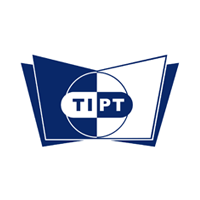
The pharmaceutical manufacturing process must be predictable and repeatable in order to ensure a working product and reduce the risk of defects, which means that consistency and reproducibility are two core components of pharmaceutical technology.
Granulation is the process of producing granules or fine grains by creating bonds between collected particles, and it represents a critically important step in the production of solid dosage drugs, such as tablets, because it helps improve the processing properties of pharmaceutical compounds as they are blended, creating a more uniform, quality product.
Wet and dry granulation are two methods that you will often see during and after your practical training, and it’s important to make a distinction between the two, as well as understand their roles in the manufacturing process.
If you’re interested in joining the pharmaceutical technology profession and want to learn more about the common manufacturing methods you’ll encounter in your future career, read on to find out more.
Wet Granulation is an Important Component of Pharmaceutical Technology Training
Bonding particles together into a final granule is the most important part of the granulation process, but sometimes powders that are too fine or not capable of compressing must be mixed using wet granulation.
Wet granulation uses adhesives or a liquid solution to better bind these particles together. Rather than using compressive force, the dry primary powder particles are mixed using a granulating fluid such as water, ethanol, and isopropanol. When water is added to the mixture, it forms bonds between powder particles that lock them together, but these bonds can weaken as the water evaporates, which is why an aqueous or solvent-based liquid solution is needed to act as a binder. The mixture is then milled through a sieve to form the wet granules that will be dried into tablets.

Depending on the characteristics of the powder itself as well as the available equipment, wet granulation can either be a simple or complex process. Although you may encounter specialized forms of wet granulation, understanding the process and acquiring real, practical experience during pharmaceutical technology training can give you the skills you need to confidently carry out these techniques and procedures throughout your career in pharmaceutical technology.
Pharmaceutical Manufacturers Know Dry Granulation is Consistent and Cost Efficient
The main difference between wet and dry granulation processes is, of course, the presence of liquid. Certain products are sensitive to moisture and heat, and must be compacted to reduce the size of their particles to produce a more uniform consistency.
Dry granulation forms granules through the application of high pressure. Generally, this can be done in two different ways: by using a heavy duty tableting press to create a large tablet, or by compacting the powder through rollers to create a continuous sheet. It’s important to note, however, that because there is no solvent in the powder like with wet granulation, a tablet press may not distribute the mixture evenly, leading to inconsistent degrees of density. A roller compactor uses a specific system to continuously feed powder throughout the process, which provides a more uniform sheet that can then be milled and blended into a final product.

One of the main reasons why dry granulation is commonly used in pharmaceutical manufacturing and featured in your hands-on training at pharmaceutical technology college is because of its consistency as well as its cost. Wet granulation requires a dryer to remove moisture and create a final tablet product, which can be expensive due its high energy consumption, but dry granulation uses less equipment and additionally can be easily scaled up between development and production according to the manufacturing needs.
Are you interested in starting a new career in the pharmaceutical industry?
Contact the Toronto Institute for Pharmaceutical Technology for more information about our pharmaceutical manufacturing program.
